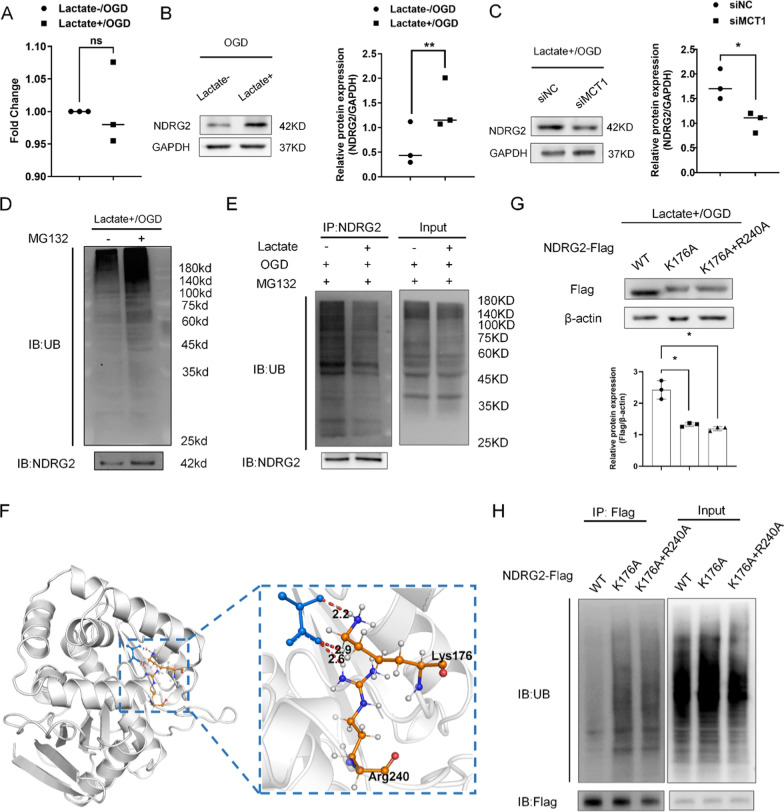Fig. 2.
Under oxygen–glucose deprivation (OGD), extracellular lactate enters cells and upregulates NDRG2 protein expression by suppressing its ubiquitination. A A qRT–PCR analysis of NDRG2 mRNA after lactate treatment. GAPDH was used as an endogenous control. Paired t-tests were used for statistical comparisons. Data are expressed as means ± SD. n = 3, ns = no significance vs. Lactate-/OGD. B Western blot for the determination of NDRG2 protein expression levels in ‘‘lactate−” and ‘‘lactate + ” groups. GAPDH was used as a loading control. Semi-quantification of western blot findings shows the relative protein expression. Paired t-tests were used for statistical comparisons. Data are expressed as means ± SD. n = 3, **P < 0.01 vs. Lactate-/OGD. C Western blot findings for NDRG2 protein expression after siMCT1 transfection. GAPDH was used as a loading control. Paired t-tests were used for statistical comparisons. Data are expressed as means ± SD. n = 3, *P < 0.05 vs. siNC. D Western blot for determining the poly-ubiquitination of total proteins (UB) and NDRG2. E Ubiquitination assay of NDRG2 in astrocytes in the ‘‘lactate−” and ‘‘lactate + ” groups. NDRG2 was used as a loading control. F Molecular docking simulation studies were used to investigate the potential interactions between lactate and NDRG2. G Western blot to determine the two NDRG2 variants mutated at the putative interaction sites (K176A and R240A) in astrocytes after applying OGD conditions and lactate stimulation. Statistical significance was assessed using one‐way ANOVA. Data are expressed as means ± SD; n = 3, *P < 0.05 vs. wild type (WT). H Ubiquitination assay of variant NDRG2 proteins in astrocytes after applying MG132 and lactate stimulation under OGD conditions

